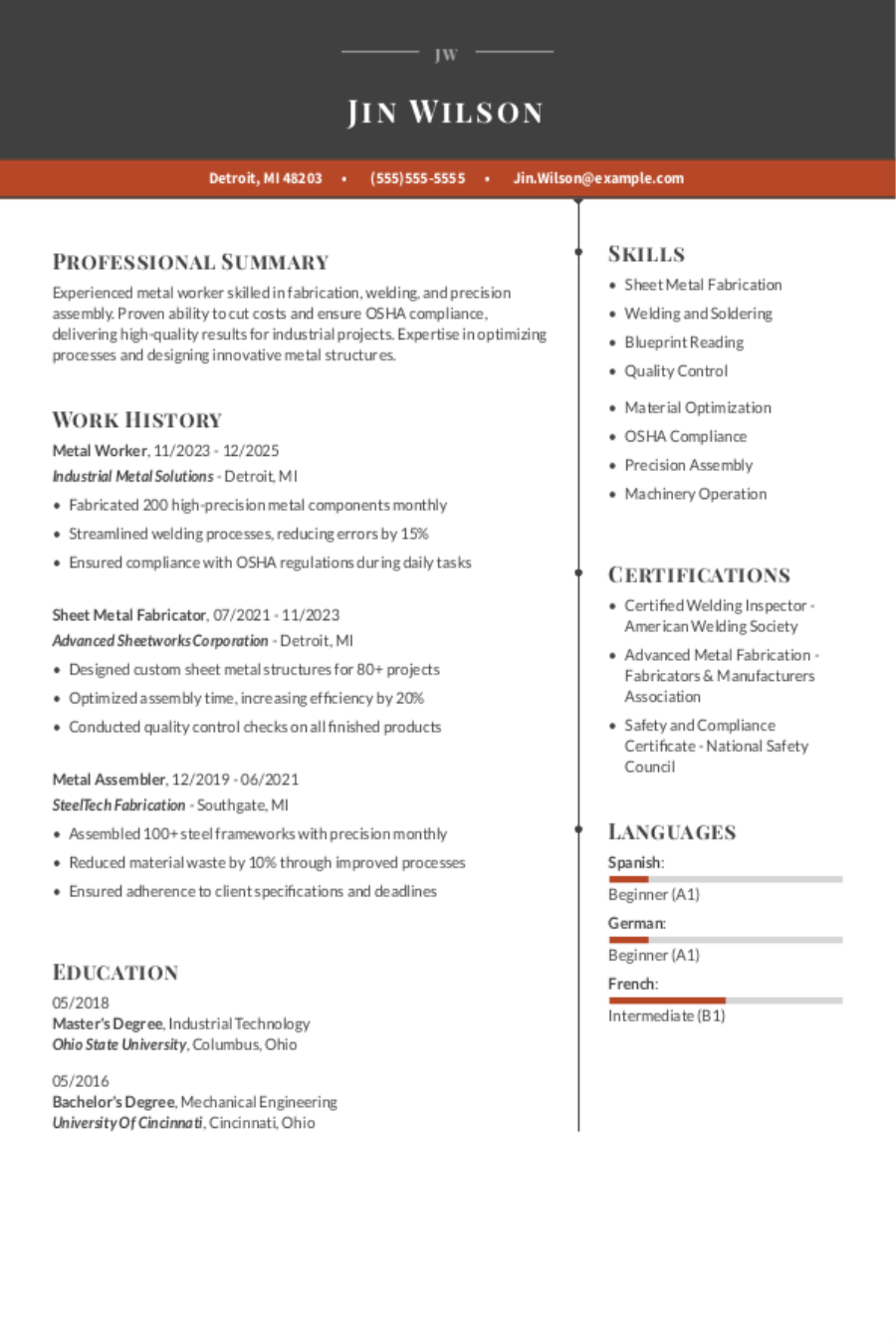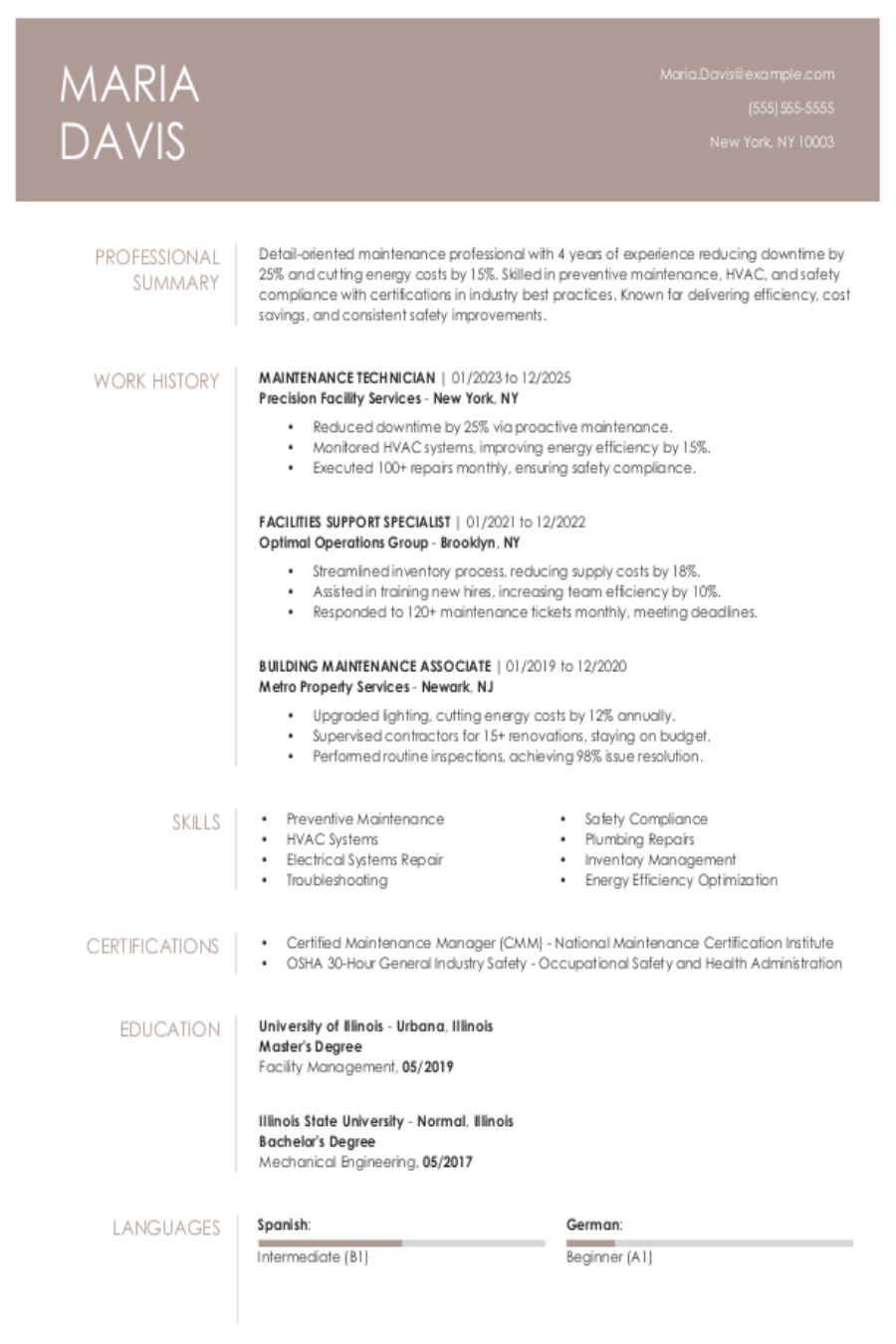As a job seeker, it's no secret that having a winning resume is nonnegotiable in order to stand out. But a great resume is only a single piece of the job-seeking puzzle.
From keyword-optimized resumes and cover letters to company culture requirements, the ways people look for and apply to jobs are changing—and fast!
Prepare yourself for the 2025 job search with our list of resume statistics to help you understand the current trends in job seeking and hiring.
In this page, you'll find:
- Resume statistics to help you strategize
- Cover letter statistics to support your resume
- Job search statistics to prepare for your search
- Job interview statistics to help you progress through the hiring process
- AI statistics to help you understand the latest tech
Ready to get started on your resume? Use our AI Resume Builder to support your job search with a streamlined resume-writing process that guides you from start to finish. Try one of our stylish premium templates to create a resume that showcases your professional brand.
Top 20 Resume Statistics
Your resume is your most important job search tool because it introduces your career to employers and gives you a chance to showcase your skills. Creating a strong resume is an essential step to get your job search started.
The top resume statistics of 2025 will arm you with the knowledge to create a resume that stands above the competition, or improve your current resume to level up your job search.
1. The average resume is 683 words long, with 287 words being roughly the single-page resume cutoff point. (Enhancv)
2. Generally, resume experts recommend single-column resumes because they are usually easier for ATS systems to parse. Despite this, 96% of job seekers in 2024 chose a double-column format. (Enhancv)
3. 90% of resumes place both an email address and a phone number in the resume header. 75% also include a home address, but over 50% of hiring managers prefer resumes not to include home addresses. (ProsperityForAmerica)
4. 19% of resumes feature a hobbies and interests section, but as many as 79% of recruiters admit to not reading them. (Enhancv)
5. Job seekers with more than 99% of the words on their resume spelled correctly are three times more likely to get hired. (MIT Sloan)
6. Candidates with AI-assisted resumes are 7.8% more likely to get hired. (MIT Sloan)
7. On a resume, 61% of employers believe soft skills are just as important as hard skills. (CareerBuilder)
8. The most popular soft skills to list on a resume include the following: (Zety)
- Communication (11%)
- Leadership (9%)
- Time management (8%)
9. The most popular hard skills to list on a resume include the following: (Zety)
- Microsoft Office (12%)
- Project management (6%)
- Microsoft Excel (6%)
10. Only one-third of recruiters think job candidates are honest about their skills, and 85% believe candidates exaggerate their skills on their resume. (HR Dive)
11. A majority 93% of resumes include one or more action words or phrases. (KickResume)
12. Unfortunately, 44% of resumes include 10 or more filler words, from unnecessary pronouns like I, we, their or my to certain adverbs like always, totally and completely. (KickResume)
13. According to an eye-tracking study, the resumes that are most likely to get noticed by recruiters share the following characteristics: (The Ladders)
- A clear, simple resume that uses logical layouts
- An overview at the top (like a summary or objective section)
- Clear, legible fonts
14. The lowest-performing resumes in the eye-tracking study had the following characteristics: (The Ladders)
- A cluttered look with little white space
- Poor layout
- Keyword stuffing
15. Nearly one quarter (24%) of hiring managers spend less than 30 seconds looking at a resume. (CareerBuilder)
16. Roughly 97% of Fortune 500 companies use an applicant tracking system (ATS) to automatically screen resumes for keywords. (Jobscan)
17. Up to 75% of qualified applicants have been rejected by an ATS because the software couldn't read their resumes—a great reason why you should stick with a simple resume design and double-check your resume's ATS performance with the help of an ATS resume checker. (Forbes)
18. Including numerical data on your resume can provide a significant boost. Resumes that include hard metrics can have as much as a 40% higher chance of earning an interview. Despite this, only 8% of resumes take advantage of numerical data. (Enhancv)
19. The most popular resume sections for candidates are the following: (Zety)
- Languages (31%)
- Certifications (27%)
- Additional activities (21%)
- Interests (19%)
20. These are the top resume deal breakers for hiring managers: (ProsperityForAmerica)
- Typos or bad grammar (77%)
- Unprofessional email address (35%)
- Lack of quantifiable results (34%)
Cover Letter Statistics to Accompany Your Resume
Cover letters are sometimes seen as the forgotten little brother of the resume. But they serve an important purpose. A great cover letter can make you stand out to hiring managers and demonstrate the traits, interests, and skills that make you the perfect fit for the role.
Check out the following cover letter statistics for a reminder of their importance when it comes to landing your next role.
Need help creating a cover letter? Try our AI Cover Letter Generator for writing assistance and stylish templates that match your resume and help your application beat the ATS screening process.
21. Only 38% of job seekers included a cover letter with their application when it was required. (ResumeLab)
22. Yet, well over half (64%) of job listings with a direct application process require a cover letter. (ResumeLab)
23. Even when submitting a cover letter is optional, 77% of recruiters give preference to candidates who send a cover letter. (ResumeLab)
24. In fact, 45% of hiring managers always read cover letters and 38% usually read them. (Genius)
25. 36% of hiring managers actually read the cover letter before they read the resume. (ResumeLab)
26. 63% of recruiters report that cover letters are useful in explaining an applicant's motivation for joining the company. (YahooFinance)
27. The same study found that 77% of recruiters said they would give preference to candidates who submitted cover letters, even if they weren't required. Additionally, 72% of respondents reported expecting to receive cover letters, whether or not they are required. (YahooFinance)
28. In addition, 51% say that a weak cover letter might deter them from inviting an otherwise qualified applicant for an interview. (Genius)
Job Search Statistics
Wondering about the current state of the job market? From remote work to hiring trends, the following statistics offer insight into the current job search landscape.
29. Nearly two-thirds of surveyed American workers say that a new job would improve their happiness. (Resume Now)
30. Despite desiring change, more than 60% of respondents in the same survey report staying at a job longer than they wanted to. Their top reasons for staying in unfulfilling roles include: (Resume Now)
- Fearing a pay cut (35%)
- Fearing general financial instability (34%)
- Concerns over whether the new role would suit them professionally (32%)
- Concerns over potential skill gaps (20%)
31. Top motivators for a career change include: (Resume Now)
- The desire for a better salary and benefits (57%)
- Interest in improving work-life balance (29%)
- Desire for flexible or remote working opportunities (19%)
32. While uncertainty is influencing job search decisions for some Americans, certain fields are experiencing talent shortages and wage growth. Trucking and warehouse work are leading the charge with a 16% and 15% wage growth in Q1 of 2025. (Resume Now)
33. Nonetheless, 73% of job seekers say finding a job is one of the most stressful events of their entire lives. (NorthOne)
34. These days, up to 85% of jobs are filled via networking. (LinkedIn)
35. People who have certifications as their highest level of education earn, on average, 20% more than those whose highest level of education is a high school diploma. (BLS)
36. People change jobs an average of 12.3 times throughout their working lives. (BLS)
37. Well over half of Americans (62%) have taken a break at some point in their careers. (LinkedIn)
38. Nearly one-fourth of working professionals (23%) feel like they are on a "treadmill going nowhere." (LinkedIn)
39. Up to 92% of employers pursue background checks, with most of them (87%) occurring during the pre-employment stage to check references and ensure accurate qualifications. (SHRM)
40. More than 90% of talent acquisition pros believe that assessing a candidate's skills is key to hiring qualified candidates. (LinkedIn)
41. Between 2020 and 2023, recruiters' interest in degrees has dropped in favor of skills-based hiring. In 2023, 26% of paid job posts on LinkedIn did not require a degree, compared to 22% in 2020. That amounts to a 16% increase in roles not requiring degrees over that time frame. (LinkedIn)
Job Interview Statistics
If resumes are the first impression in your hiring process, job interviews are where you cross the finish line.
First, you should prepare answers to common interview questions. Then, come up with some smart questions of your own. These job interview statistics can help.
42. 31% of interviewees report low or inaccurate salary offers as their most disliked interview behavior, with 35% withdrawing their candidacy as a result of salary woes. (JobScore)
43. 52% of companies have an interview process that lasts as long as four to six weeks, which may exhaust job-seekers' patience. (JobScore)
44. 66% of candidates report that they are more likely to accept a job offer after a positive interview experience. (CareerPlug)
45. On average, a corporate job attracts 250 applicants, of which only 2% will be invited to interview. (Glassdoor)
46. Employers say these are the soft skills most lacking in candidates they interview: (ZipRecruiter)
- Time management (47%)
- Professionalism (43%)
- Critical thinking (39%)
47. The average time-to-hire across all industries is three to four weeks. (Yello)
48. 40% of job-seekers have been ghosted after a second or third round interview. (Indeed)
49. Having a bright, positive attitude makes all the difference in an interview, according to 78% of employers. (TeamStage)
AI in Hiring and at Work Statistics
Artificial intelligence is shaking up both the job market and work itself in big ways. From the widespread use of AI hiring tools to organizations pivoting their focus toward AI initiatives, here are some current statistics on the impact of AI on job-seekers and workers.
50. According to LinkedIn, 73% of talent acquisition professionals believe that generative AI will change the way that organizations hire. (LinkedIn)
51. A Pew Research Center study found that 62% of Americans believe that AI will have a major impact on workers in general. (Pew Research Center)
52. While talent acquisition pros may be warming up to AI usage, the same Pew Research Center study found that 71% of Americans oppose the idea of AI being used to make final hiring decisions. 41% of respondents oppose its use in reviewing applications, and more than half oppose AI being used to track employee desk time while at work. (Pew Research Center)
53. In one survey, 66% of employees reported using employer-provided AI tools, and 23% used both company and personal AI tools. Among them, 57% admit to regularly using AI in ways that may conflict with company AI compliance policies. (Resume Now)
54. The same survey found that 85% of employees report that AI has increased their productivity, but 43% say they need more training on how to use AI effectively. (Resume Now)
55. Another survey found that among over 1,000 job-seekers, 84% reported that AI has made finding job opportunities easier, and 80% reported using AI-powered job search platforms to find new opportunities. (Resume Now)
56. The same survey found that 66% of respondents say AI has significantly increased job competition because it enables more people to find opportunities at a faster rate. (Resume Now)
57. Generative AI raises concerns among recruiters and hiring professionals as well. According to LinkedIn, 37% cite data privacy and security concerns as their top barrier for using AI in the hiring process. (LinkedIn)
These resume statistics paint a picture of what the future of work looks like: a more diverse, remote workforce that relies on technology to assist with everyday business processes.
Regardless of how the workforce changes down the line, it's becoming clear that the best way to stay competitive is to stay ahead of the curve—and if you want to become a competitive applicant in today's job market, you can start by building your resume today.
Was this information about Resume Statistics helpful? Let us know!
Hailey is a career advice writer dedicated to helping job seekers excel in their careers.
More resources

How to Use Resume Now’s Resume Builder for Free
Try Resume Now s AI-powered Resume Builder for free to access ...

How to Include Networking Skills on a Resume (40+ Examples, Definition & Tips to Improve)
What are networking skills? We ll answer this and all your p...

Law Enforcement Resume: Examples & Templates
Was this information about Resume Statistics helpful? Let us k...

Metal Work Resume: Examples & Templates
Was this information about Resume Statistics helpful? Let us k...

Maintenance Resume: Examples & Templates
Was this information about Resume Statistics helpful? Let us k...

